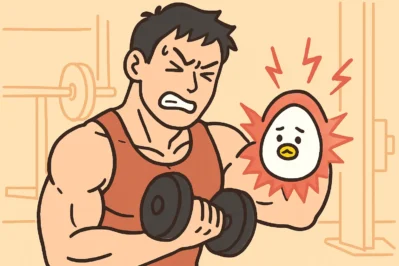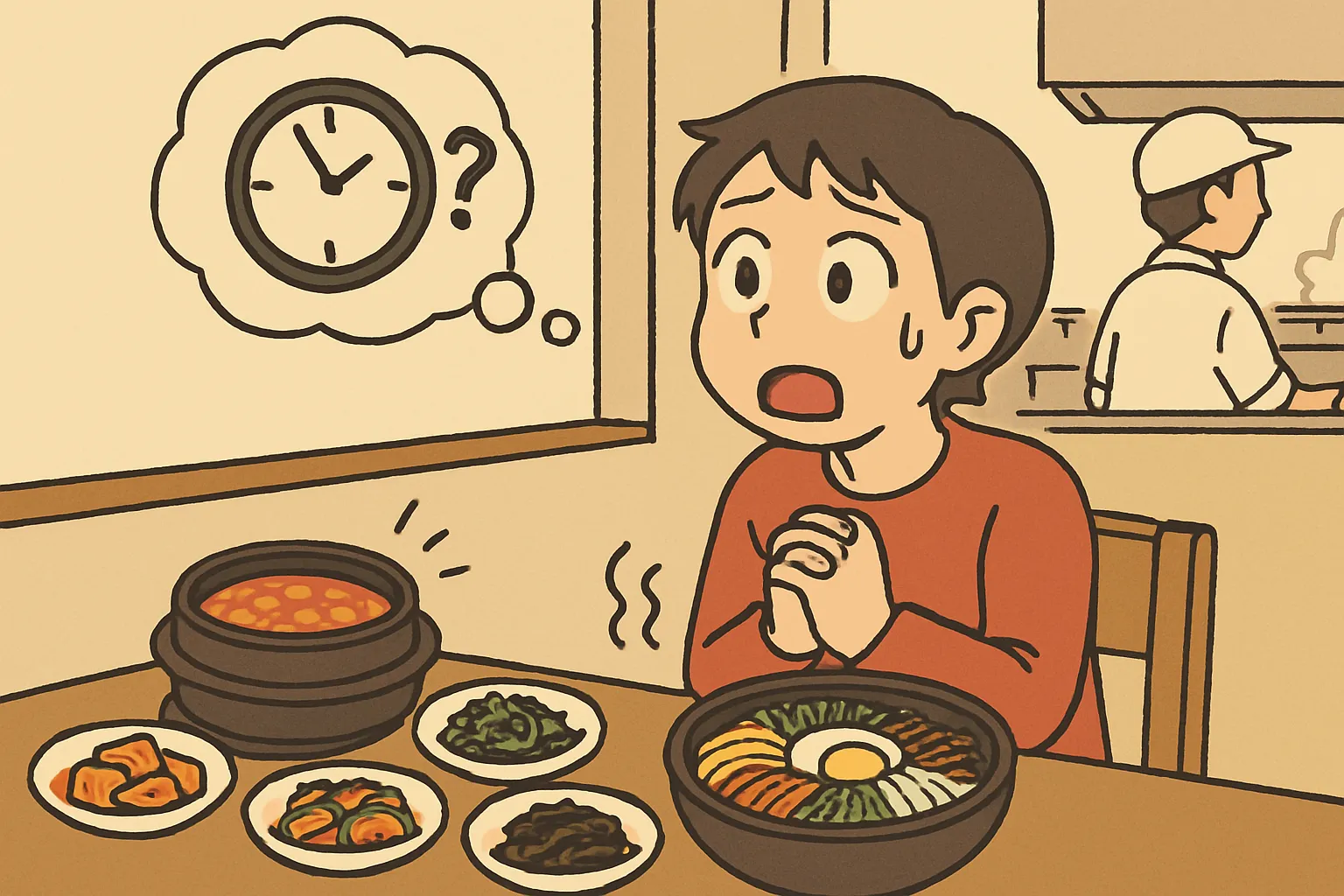Hello! Welcome to [Maeil Hangul], here to upgrade your Korean skills to the next level!
Are you a fan of hitting the gym? Or perhaps you’ve just started a new exercise routine? Then you’re probably familiar with that satisfying—yet painful—ache in your muscles a day or two later. Today, we’re diving deep into a topic perfect for any fitness enthusiast: Delayed Onset Muscle Soreness (DOMS). Lately in Korea, the fitness boom is undeniable. The “헬스 (health/gym)” culture is huge, with fitness influencers and bodybuilders dominating social media. To join the conversation, you need to know how to talk about the inevitable “reward” of a great workout: muscle pain. Let’s learn how to discuss the science and solutions like a pro!
Core Expressions for Your Fitness Journey
Here are the essential terms you need to discuss DOMS on a more advanced level.
1. 지연성 근육통 (Jiyeonseong Geunyuktong)
* Pronunciation [Romanized]: Ji-yeon-seong geun-yuk-tong
* English Meaning: Delayed Onset Muscle Soreness (DOMS)
* Detailed Explanation: This is the formal, scientific term. It’s a compound word: 지연성 (jiyeonseong) meaning ‘delayed,’ 근육 (geunyuk) meaning ‘muscle,’ and 통 (tong) meaning ‘pain.’ You will encounter this term in academic articles, news reports about health, or when speaking with a professional physical therapist or a highly knowledgeable personal trainer. It shows you have a sophisticated understanding of the topic.
2. 알이 배기다 (Ari Baegida)
* Pronunciation [Romanized]: Al-i bae-gi-da
* English Meaning: To have sore muscles (colloquial)
* Detailed Explanation: This is the expression you’ll hear 99% of the time in casual conversations. The literal translation is “an egg is conceived/formed,” which paints a perfect picture of the tight, hard knot you feel in a sore muscle. It’s a fun, descriptive idiom. You conjugate it like any other verb: “어제 운동했더니 다리에 알이 배겼어요.” (I worked out yesterday, and now my legs are sore.)
3. 근육이 찢어지는 느낌 (Geunyugi jjijeojineun neukkim)
* Pronunciation [Romanized]: Geun-yuk-i jji-jeo-ji-neun neu-kkim
* English Meaning: A feeling of muscles tearing
* Detailed Explanation: This phrase vividly describes the sensation of DOMS. It refers to the micro-tears in muscle fibers that cause the pain and lead to muscle growth. Use this C1-level expression to articulate the intensity of your muscle soreness. For example: “이번 통증은 그냥 알이 배긴 수준이 아니라, 근육이 찢어지는 느낌이에요.” (This pain isn’t just normal soreness; it feels like my muscles are tearing.)
4. 완화 전략 (Wanhwa Jeollyak)
* Pronunciation [Romanized]: Wan-hwa jeol-lyak
* English Meaning: Mitigation Strategy / Relief Method
* Detailed Explanation: This is another formal, high-level term. 완화 (wanhwa) means ‘alleviation’ or ‘mitigation,’ and 전략 (jeollyak) means ‘strategy.’ You would use this when seriously discussing or researching ways to treat DOMS. It’s perfect for asking for advice in a formal setting: “지연성 근육통에 가장 효과적인 완화 전략은 무엇인가요?” (What is the most effective mitigation strategy for DOMS?)
Example Dialogue: At the Gym
Let’s see how these expressions work in a real conversation between two gym buddies, Minsu (A) and Chris (B).
A (민수): 크리스 씨, 오늘 표정이 안 좋네요. 무슨 일 있어요?
(Chris, you don’t look so good today. Is something wrong?)
B (크리스): 아, 민수 씨. 어제 오랜만에 스쿼트를 최대 중량으로 했더니 허벅지에 알이 꽉 배겨서 걷기도 힘들어요.
(Ah, Minsu. I did squats with my max weight for the first time in a while yesterday, and my thighs are so sore it’s hard to even walk.)
A (민수): 아, 지연성 근육통이 심하게 왔군요. 거의 근육이 찢어지는 느낌이죠? 그럴 땐 가벼운 스트레칭이나 마사지가 좋아요.
(Ah, you’ve got a bad case of DOMS. It feels almost like your muscles are tearing, right? Light stretching or a massage is good for that.)
B (크리스): 정말요? 교수님께서 추천해주실 만한 다른 효과적인 완화 전략이 또 있을까요?
(Really? Are there any other effective mitigation strategies you could recommend, Professor?)
A (민수): 그럼요. 충분한 수분 섭취와 단백질 보충도 중요해요. 오늘 운동은 쉬고 회복에 집중하는 게 좋겠어요.
(Of course. Sufficient hydration and protein intake are also important. It would be best to skip today’s workout and focus on recovery.)
Culture Tip & Trend Deep Dive
In Korea, the term ‘헬창 (hel-chang)’ has become a popular slang for a “hardcore gym-goer” or “gym rat.” For a 헬창, feeling sore (알이 배기다) isn’t a complaint; it’s a badge of honor. On Instagram, you’ll see them post workout photos with captions like “#오운완 (오늘 운동 완료 – Today’s workout, complete!)” and “#근손실 (muscle loss),” jokingly fearing any activity that might cost them their gains.
Furthermore, top-tier Korean fitness YouTubers like ‘피지컬갤러리 (Physical Gallery)’ often create scientific content explaining the mechanisms of 지연성 근육통 and comparing various 완화 전략, from ice baths to foam rolling. Understanding these specific terms will allow you to engage with this expert-level content and truly immerse yourself in Korea’s modern fitness culture. Using “지연성 근육통” when talking to a trainer will instantly signal that you’re a serious, well-informed learner.
Let’s Review and Practice!
Great job! Today we learned how to discuss muscle soreness like a true fitness expert in Korean, covering everything from the casual “알이 배기다” to the technical “지연성 근육통” and its “완화 전략”.
Now, let’s test your knowledge!
- Fill in the blank: After an intense arm workout, you text your friend:
“와, 어제 팔 운동 너무 열심히 했나 봐. 팔에 ______ 제대로 ______!” -
Sentence Building: Imagine you are a kinesiology student writing a report. How would you write “Let’s research mitigation strategies for DOMS” in a formal way using the terms we learned?
Leave your answers in the comments below! We’d also love to hear about your latest workout using today’s new vocabulary. Happy exercising






